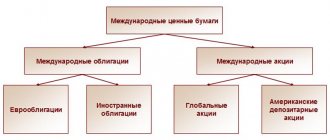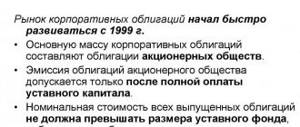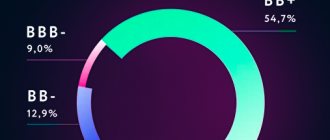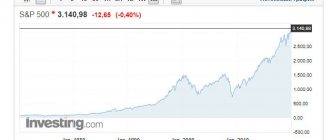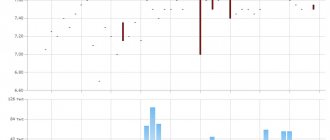In order to select the most promising investment options among the huge number of investment options on the Internet, investors need universal evaluation criteria. The most obvious is return , a measure of how much an investment has increased or decreased over time.
Return is measured as a percentage and shows the ratio of profit from real or financial investments to the amount of money invested. It shows not exactly how much the investor earned, but the effectiveness of the investment. When analyzing investment options, investors look primarily at profitability, often forgetting about possible investment risks.
I wouldn’t write a long article if one formula worked for all cases - there are plenty of pitfalls when calculating profitability in different cases. In principle, you don’t have to bother and use my free tool for these purposes, but it is still advisable to understand the essence of the issue. The article describes frequently occurring situations related to investment returns. There will be a lot of 8th grade math, so get ready 
This article is part of my free educational series on investing basics. If you have questions, problems or need advice, I am at your service in the comments.
Before we move on, a little blurb:
I would like to recommend you the investment accounting service from the partner of the Webinvestor Blog - the company Intelinvest . On it you can monitor your portfolio through the website or mobile application, and you do not need to provide passwords to import transactions. You can keep track of any assets: stocks, bonds, cryptocurrencies, precious metals, forex investments, etc. There is a functional free version for testing. If you would like to make a full subscription, use promo code 1VYV9CMSTD to get 20% off your first payment.
Thank you for your attention, let's continue!
What determines bond yields?
First, let's figure out how the bond owner generally receives income. It (income) is generated due to two components:
- coupon income;
- the difference between buying and selling a bond.
Disclaimer: hereinafter I will write about coupon bonds, and not about discount bonds, what is the difference between them - read the article about bonds.
The coupon income is mostly determined in advance. For example, according to OFZ-26215-PD, the coupon size is 7% per annum, payment is made once every six months. Consequently, investors will receive 7% of the bond's face value every 182 days - i.e. 34.9 rubles each (face value is 1000 rubles).
The second type of income is the difference between the purchase and sale prices. Bonds are rarely sold at par - most often the market price of the bond is above or below par. Why the price of a bond changes depends on many factors, but the main one is the Central Bank rate. If the Central Bank raises the key rate, then previous bond issues become unprofitable and they become cheaper. If the rate decreases, then investors begin to buy bonds with high rates (i.e., high yield), and the price of the bond will increase. Details: How, why and what does the price of a bond change?
But the market price of the bond relative to the par value changes little, so it is unlikely that you will be able to make serious money on this. Most often, bonds are purchased for the sake of coupon income.
Now that it is clear what bond yields depend on, let’s talk about what types of returns there are in the stock market and which ones you should choose for analysis.
Fisher's formula applied to monopoly and competitive pricing
A pure monopoly primarily presupposes that one producer has complete control of the market and perfect awareness of its state. The main goal of a monopoly is to maximize profits with minimal costs. A monopoly always sets its price above marginal cost and output below that of perfect competition.
The presence of a monopolist manufacturer in the market usually has serious economic consequences: the consumer spends more money than in conditions of fierce competition, while prices rise along with the inflation index.
If the change in these parameters is taken into account in the Fisher formula, then we get an increase in the money supply and a constant decrease in the number of goods in circulation. This situation leads the economy to a vicious cycle in which an increase in the inflation rate only leads to an increase in prices, which ultimately further stimulates the rate of inflation.
A competitive market, in turn, reacts to an increase in the inflation index in a completely different way. Market arbitrage brings prices into line with market conditions. Thus, competition prevents an excessive increase in the money supply in circulation.
Types of bond yields
Coupon yield
The easiest to understand and calculate is the coupon yield of a bond. It's just the size of the coupon. For example, if an issue offers a 7% coupon, then the coupon yield of this bond issue is said to be 7% per annum. Therefore, it is easy to calculate the annual yield of bonds - it is equal to the amount of annual coupon payments. For example, in the above example, the investor will earn 70 rubles from one bond.
It should be noted that some issuers offer payments not once a year, but once every six months or even once a quarter. Therefore, the payment is divided into 2 or 4 parts. So, if the coupon is 8%, and payments are made every quarter, then the investor will receive 2% of the face value at a time.
Bonds do not have interest capitalization, as on deposits. And the size of the coupon does not depend in any way on the market value of the paper.
And here’s another interesting article: History of the microfinance market from antiquity to the present day
Current yield
This type of yield takes into account the market price of the bond. It shows how much an investor will earn relative to their current investment. Agree, getting 80 rubles by investing 1000 and 950 rubles is not the same thing: the second option is more profitable.
To calculate the current yield of a bond, you need to divide the coupon income for the year by the market price of the bond and multiply by 100%:
(coupon / market price) * 100%.
For example, the OFZ-24019-PK issue offers a coupon yield of 7.35% per annum. But now the bond is selling for 999.6 rubles. Therefore, the current yield will be higher, namely: (73.5 / 999.6) * 100% = 7.3529%.
Nominal yield
The previous calculation does not take into account the accumulated coupon income - i.e. a coupon that has already been credited but not paid. When purchasing a bond, the investor must pay the ICD to the previous owner - this is fair, because the previous owner of the bond must receive compensation for the days of ownership.
The nominal yield of a bond is intended to correct this “omission”. It is calculated using the following formula:
(P1 / P2) – 1,
Where:
- P1 is the final payment amount (i.e. par value + coupon);
- P2 is the purchase price of the bond taking into account the accrued income;
- 1 – well this is 1
